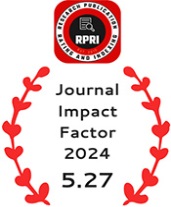India, Middle East and Europe Economic Corridor; Opportunities and Challenges
DOI:
https://doi.org/10.55544/ijrah.4.6.15Keywords:
Economy, Security, Culture, PoliticsAbstract
This study focuses on the India, Middle East and Europe Economic Corridor (I-ME-EEC), a major infrastructure project unveiled during the G20 meeting in India. The project is an important attempt to improve connectivity between South Asia, the Middle East and Europe, with the aim of changing regional dynamics through increased energy production, trade and cooperation frameworks. The I-ME-EEC represents strategic economic and geopolitical goals by presenting itself as a possible alternative to China's grandiose Belt and Road Initiative (BRI). The study examines in depth the economic, political, security, cultural and environmental aspects of the corridor using a qualitative research methodology. The study examines the project's broader implications for global geopolitics while highlighting its potential to alter international trade lines, promote regional integration and reduce security challenges. Furthermore, the analysis not only examines the project's broader implications for global geopolitics, but also emphasizes how it could alter international trade routes, promote regional integration and reduce security threats. It will also be discussed how the I-ME-EEC affects the participating countries and how their participation in supra-regional projects is linked. The conclusions of this study help us better understand how infrastructure projects impact the world, particularly when it comes to balancing the strategic goals of major powers. The opportunities and difficulties of the corridor are critically examined in this article, while also highlighting the potential of the corridor to influence future transcontinental political and economic realities and to act as a catalyst for regional cooperation.
Downloads
References
Bhatt, Yagyavalk, & Jitendra Roychoudhury. (2024). Bridging economic and digital aspirations: IMEC's role in transport and energy. KAPSARC Reports, 34(1), 22-35. Available at: https://www.kapsarc.org.
Khan, Raza Ali. (2024). India-Middle East-Europe Corridor (IMEC): Rhetoric, realities, and implications for Pakistan. Margalla Papers, 28(1), 75-92. Available at: https://margallapapers.ndu.edu.pk.
Sengupta, Sharmistha. (2024). Strategic significance of IMEC in global trade dynamics. Economic and Political Weekly, 59(45), 12-16.
Singh, Karan, & Meera Balakrishnan. (2024). Connecting Asia, Europe, and the Middle East: IMEC as an alternative to BRI. Strategic Analysis, 48(3), 275-300.
Qiu, Lixin, & Rajesh Pillai. (2024). The digital and energy dimensions of IMEC. Journal of International Trade and Economic Development, 33(4), 355-372.
Menon, Ravi. (2024). Strategic ports and railways in the Middle East for IMEC. Middle East Economic Review, 56(2), 89-105.
Karimi, Hamed. (2024). India-Middle East-Europe Economic Corridor and maritime security. Naval Forces Journal, 18(3), 45-62.
Sengupta, Avik. (2024). The future of supply chains: Lessons from IMEC. Journal of Global Logistics, 12(5), 220-238.
Meloni, Giorgia, et al. (2024). Digital highways in IMEC: An EU perspective. European Energy Journal, 34(2), 78-93.
Suri, Navdeep, et al. (2024). India-Middle East-Europe Economic Corridor: Towards a new discourse in global connectivity. Observer Research Foundation, 12(3), 30-42. Available at: https://www.orfonline.org.
National University of Singapore. (2024). India-Middle East-Europe Corridor: Infrastructure development and challenges. ISAS Briefs, 5(2), 15-20. Available at: https://www.isas.nus.edu.sg.
KAPSARC. (2024). Climate and cost implications of IMEC projects. KAPSARC Reports, 8(1), 18-24. Available at: https://www.kapsarc.org.
Observer Research Foundation. (2024). Renewable energy and green transition in IMEC. ORF Analysis, 20(5), 65-78. Available at: https://www.orfonline.org.
Institute of Strategic Studies. (2024). IMEC and regional cooperation in the Middle East. ISS Policy Papers, 7(4), 55-68.
The Diplomat. (2024). The role of IMEC in post-G20 global infrastructure strategy. The Diplomat, 29(9), 22-30. Available at: https://www.thediplomat.com.
United Nations Development Programme. (2024). IMEC: Potential for sustainable development in West Asia. UNDP Reports, 15(3), 45-52.
Asian Development Bank. (2024). Economic connectivity: The role of IMEC in regional development. ADB Reports, 10(2), 33-48.
European Union. (2024). Funding for IMEC under the Global Gateway Initiative. EU Policy Briefs, 8(4), 60-70.
World Bank. (2024). Assessing IMEC's infrastructure investment needs. World Bank Research Papers, 12(6), 90-102.
Downloads
Published
How to Cite
Issue
Section
License
Copyright (c) 2024 Aziz Ahmad Fazli

This work is licensed under a Creative Commons Attribution-NonCommercial-NoDerivatives 4.0 International License.




















